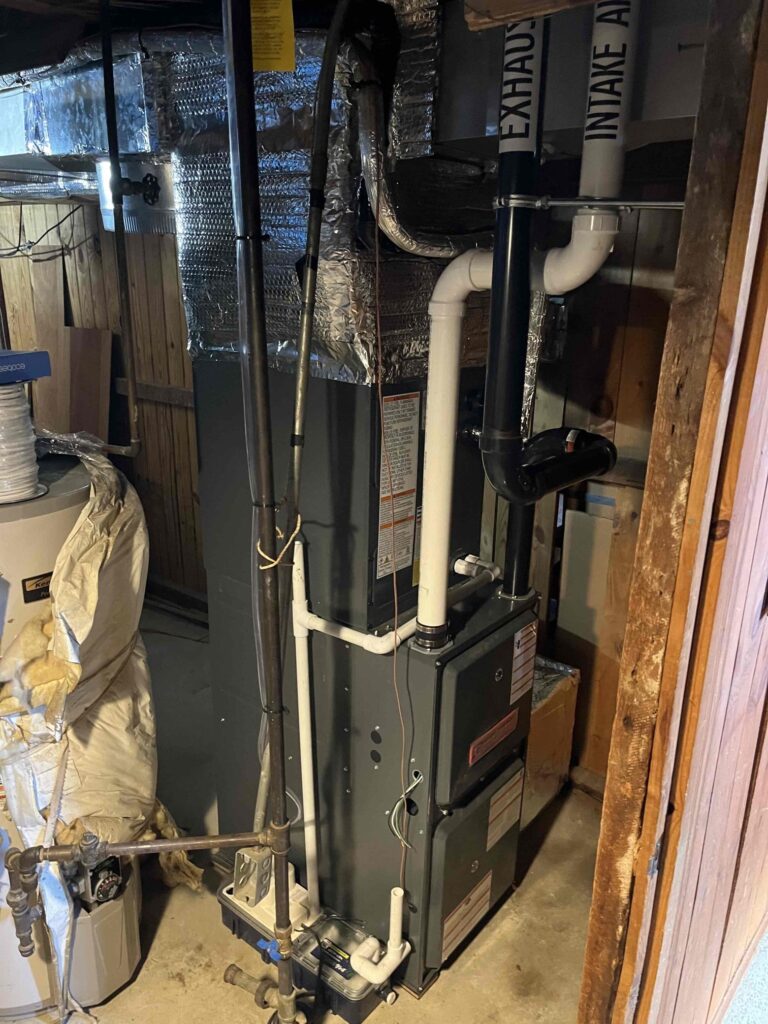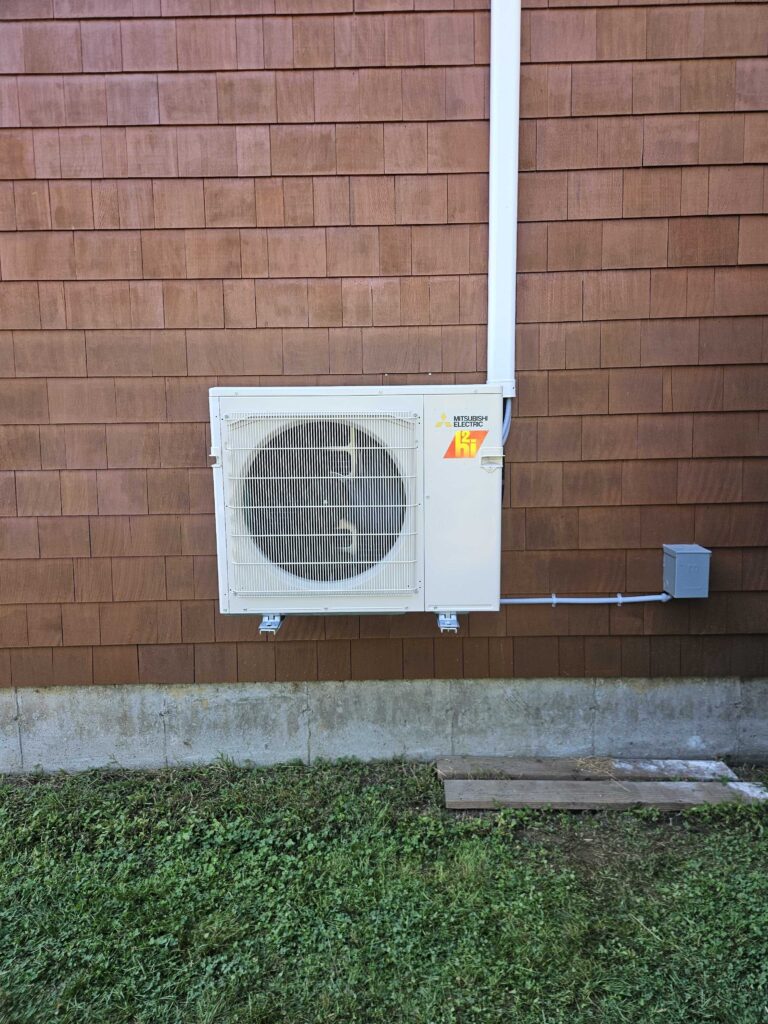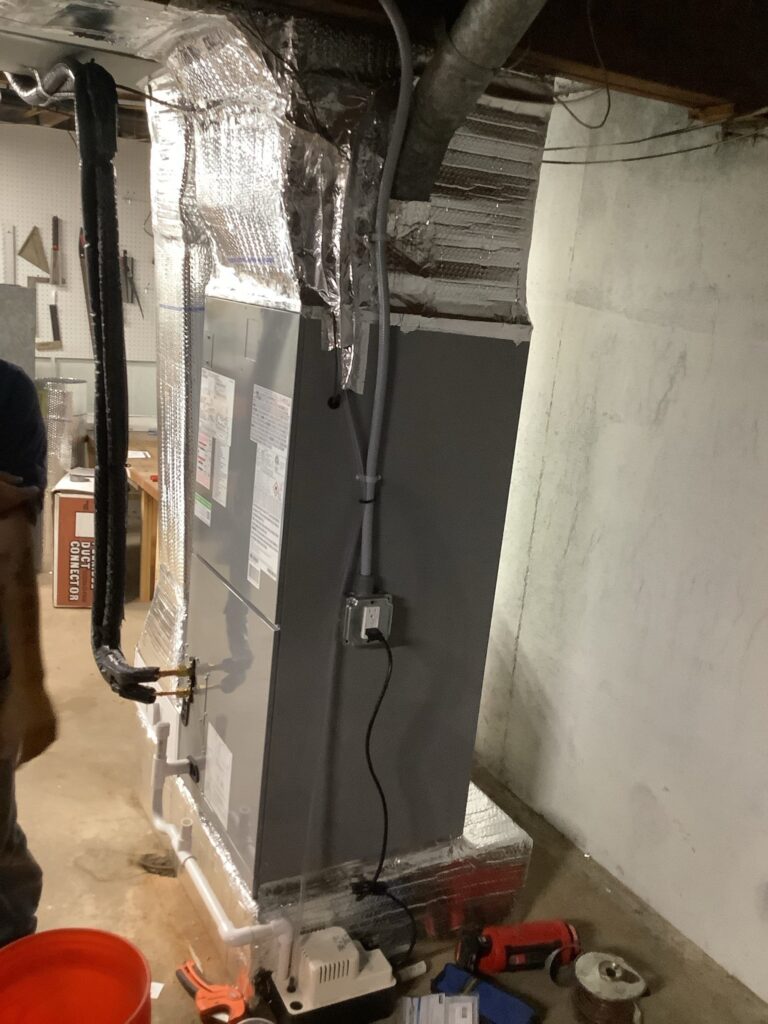Variable Speed vs Single Stage: Which Furnace Is Best for Metrowest Massachusetts Homes?
A nor’easter is rattling the windows of your Framingham home, the wind chill has plunged below zero, and suddenly you notice the furnace cycling on and off like a light switch. You’re caught between cranking up the thermostat to stay warm and bracing for the next utility bill. Sound familiar? For many Metrowest homeowners, winter highlights just how much their heating system influences both comfort and costs.
Choosing the right furnace isn’t only about surviving the coldest nights. It’s a decision that affects monthly energy bills, everyday comfort, and the long-term value of your home. As Trane Residential points out, “While single-stage systems are the lowest in cost upfront, they’ll cost more to operate in the long run,” whereas variable speed models flip that equation by prioritizing efficiency and lowering operating costs. The type of furnace you install can either chip away at your budget each month or quietly save you money for years.
With that in mind, let’s look at how single stage and variable speed furnaces actually work, where each shines, and which one makes the most sense for homes in towns like Newton, Framingham, Sudbury, Northborough, and others across Metrowest and the wider Massachusetts region.
Table of Contents
ToggleUnderstanding Furnace Types: Variable Speed vs Single Stage
Every forced-air furnace relies on a blower motor to push warm air through your ducts, yet the way that motor operates separates basic heaters from today’s high-efficiency options. As Navien explains, “single-stage furnaces have a blower motor with one setting: full blast,” and variable-capacity models, by contrast, modulate in fine increments—sometimes from just 15 percent up to 100 percent output—to match your home’s exact heat demand and keep temperatures consistent while using less energy one setting. This fundamental difference drives everything from comfort levels to monthly utility costs.
Beyond the speed of the blower, the two designs rely on very different internal components. Single-stage furnaces pair a permanent-split-capacitor (PSC) motor with a fixed-capacity gas valve, so the system is either fully on or fully off. Variable speed furnaces upgrade to electronically commutated motors (ECMs) that can ramp up or down almost continuously and often add a modulating gas valve capable of delivering just the amount of fuel needed at any given moment. Together, these technologies reduce start-stop wear, cut electrical consumption, and deliver quieter, steadier heat.
How Single Stage Furnaces Work
When simplicity and low first cost drive the decision, single-stage equipment is the traditional choice. Here’s what happens after the thermostat clicks:
- The gas valve opens fully and the burner fires at 100 percent output.
- A PSC blower motor immediately spins at maximum speed, sending a rush of hot air into the ductwork.
- The furnace runs until the set temperature is reached, then shuts off completely.
- During the off cycle, temperatures drift until the thermostat calls for heat again, creating noticeable swings.
- Frequent on/off cycling increases wear, raises electrical draw, and often leads to louder operation.
Budget-minded homeowners, those with smaller footprints, or owners of rental properties who plan to move within a few years sometimes accept these trade-offs in exchange for the lowest purchase price.
How Variable Speed Furnaces Work
Variable speed furnaces take a very different approach. Instead of a binary on/off routine, an ECM blower motor continuously adjusts its speed to fine-tune airflow. The gas valve follows suit, modulating flame intensity so the furnace can maintain a near-steady temperature with minimal cycling. Because the blower often idles at low RPM, air moves more gently through ducts, improving filtration and cutting noise to a whisper.
Industry experts note that these ECM-equipped systems can use about six times less energy than single-speed units when operating at half speed, translating to meaningful savings on both heating and cooling bills over the course of the year.
Add in smart controls that coordinate blower speed, gas flow, and thermostat feedback, and you get a furnace capable of tailoring output to changing weather, busy family schedules, and even indoor humidity goals. While the technology is more complex, it delivers unmatched balance, efficiency, and longevity.
Comparing Efficiency, Comfort, and Energy Savings
When it comes to pure efficiency, variable speed furnaces sit at the top of the ladder. By matching output to demand instead of blasting at full capacity, they curb both gas use and electrical draw—an advantage that single stage systems simply can’t replicate. Homeowners often notice steadier indoor temperatures alongside thinner utility bills once they make the switch.
Beyond dollars, comfort tells its own story. Variable speed blowers move air gently for longer periods, which evens out temperature from room to room and keeps humidity in check. Single stage units, meanwhile, produce short bursts of hot air that can leave upstairs bedrooms chilly and living rooms stuffy before the next heating cycle begins.
Metrowest residents also care about bottom-line savings. A modest drop in monthly costs may seem small at first glance, but multiplied across a long New England heating season—and over the 15-plus-year life of a furnace—it becomes a sizable line item in the household budget. That payback potential is what pushes many families to explore high-efficiency equipment even when the upfront price looks steeper.
Efficiency and Utility Bill Impact
Efficiency gains translate directly to lower energy use, so let’s put numbers to the conversation:
- Variable speed furnaces can reduce overall consumption by 25-40 percent compared with single stage models, mainly by eliminating wasteful on/off cycling and fine-tuning burner output variable speed furnaces.
- Two-stage systems typically land in the middle, trimming energy use about 10-20 percent, whereas single stage equipment provides the baseline for comparison.
- Because electronically commutated motors (ECMs) sip electricity at low speeds, a variable speed blower running half the time can use roughly a quarter of the power required by a fixed-speed motor in an older furnace—savings you’ll see on both heating and cooling bills.
A separate pricing analysis from HVAC Load Calculate shows that real-world installed costs for an 80,000 BTU system range from about $5,500–$8,500 for an 80 percent AFUE single stage unit to roughly $6.000–$10,00 for a 96–98 percent AFUE variable speed model, underscoring the higher initial investment but also the potential for greater lifetime returns through lower operating costs and reduced wear on components real installation costs.
Comfort, Noise, and Air Quality
Comfort isn’t only about temperature—it’s the quiet hum of a blower you barely notice and the absence of drafts sneaking under doors. By running at low RPMs for extended periods, variable speed furnaces minimize noise and maintain an even temperature profile throughout the day. Single stage systems, on the other hand, flip between silence and a full-throttle roar, causing audible start-ups and noticeable swings that sensitive sleepers or remote workers quickly detect.
Longer run times also mean more air passes through the filter, improving indoor air quality—a welcome benefit for allergy-prone families. Variable speed equipment excels here because continuous low-speed circulation gives filters, UV lights, and other IAQ add-ons time to capture pollutants before they settle in living spaces.
Cost, Rebates, and Long-Term Value in Massachusetts
Sticker price is only one piece of the puzzle. The real question is how each type of furnace impacts your wallet over years of winter use, and how local rebates can tilt the scales in favor of high-efficiency equipment.
Upfront and Lifetime Costs
Before factoring in incentives, here is what homeowners typically encounter when they replace an aging furnace:
- Basic 80% AFUE single-stage models often run between $5,500 and $8,500 installed
- High-efficiency 95% AFUE single-stage options land around $6,000 to $9,500
- Mid-range 96% AFUE two-stage units usually cost $6,500 to $10,000
- Top-tier 96–98% AFUE variable speed systems fall in the $7,500 to $12,500 bracket, reflecting their more advanced motors and controls
While that last line may look steep, operating savings help even the score. As noted earlier, variable speed equipment can trim energy use by up to 40 percent versus single stage designs, and Southeastern Mechanical Services estimates payback windows of roughly five to seven years for two-stage systems and seven to ten years for variable speed models.
Rebates, Financing, and Incentives
It’s important for Massachusetts homeowners to note that Mass Save® rebates and HEAT Loan financing are currently only available for heat pump systems, not for new furnace installations. Luckily, Endless Energy has several 0% financing offers for eligible customers through our financing partner Goodleap.
If you’re considering a switch to a high-efficiency cold-climate heat pump, you can access generous rebates, zero-interest HEAT Loans, and other incentives through Mass Save®. For furnace upgrades, incentives are limited and homeowners should factor this into their decision-making.
Here is a straightforward path to secure savings if you’re interested in heat pump technology:
- Schedule a no-cost home energy assessment with a participating contractor such as our team at Endless Energy
- Review the report’s recommended upgrades and projected rebate amounts for qualifying heat pump systems
- Select eligible equipment—a cold-climate heat pump can unlock the highest incentives
- Let your contractor handle the rebate paperwork and coordinate any required inspections
- Apply HEAT Loan financing if desired, spreading the project cost over up to seven years with zero interest
Because our team at Endless Energy is a trusted Mass Save® Home Performance Contractor, we manage every step, from rebate submission to final quality assurance, so you collect your incentives without the headache.
Making the Right Choice for Your Metrowest Home
Selecting a furnace ultimately comes down to balancing three pillars—comfort, efficiency, and budget. If you’re focused on the lowest upfront cost and plan to move within a few years, a single stage model can meet basic heating needs, though you’ll accept wider temperature swings and higher monthly bills. For homeowners who expect to stay put and prioritize a cozy, evenly heated home, the math tilts toward variable speed technology. As Navien reminds us, the ability to modulate from roughly 15 to 100 percent output pays dividends in both comfort and long-term savings.
Before you decide, ask yourself a few questions:
- How long do you plan to remain in the property?
- Are you sensitive to temperature fluctuations or furnace noise?
- Would lower utility bills and better air quality improve your family’s day-to-day life?
- Are you interested in switching to a heat pump system to access Mass Save® rebates and financing?
Answering honestly will point you toward the system that aligns with your goals. And if gray areas remain—perhaps your home sits on the line between “adequate” and “premium”—remember that Massachusetts incentives for heat pumps can narrow the price gap while shortening payback periods that, per Southeastern Mechanical’s estimates, can fall inside a single decade.
Ready to see what an upgraded heating system could look like in your own home? You now can self schedule a no cost furnace or heat pump replacement consultation with Endless Energy to learn how you can upgrade your heat today.





